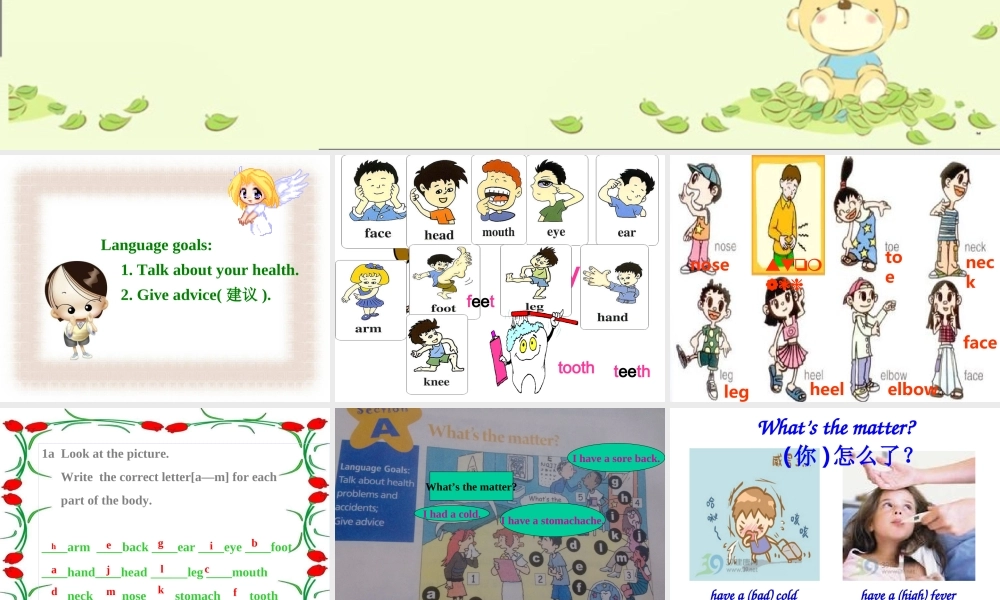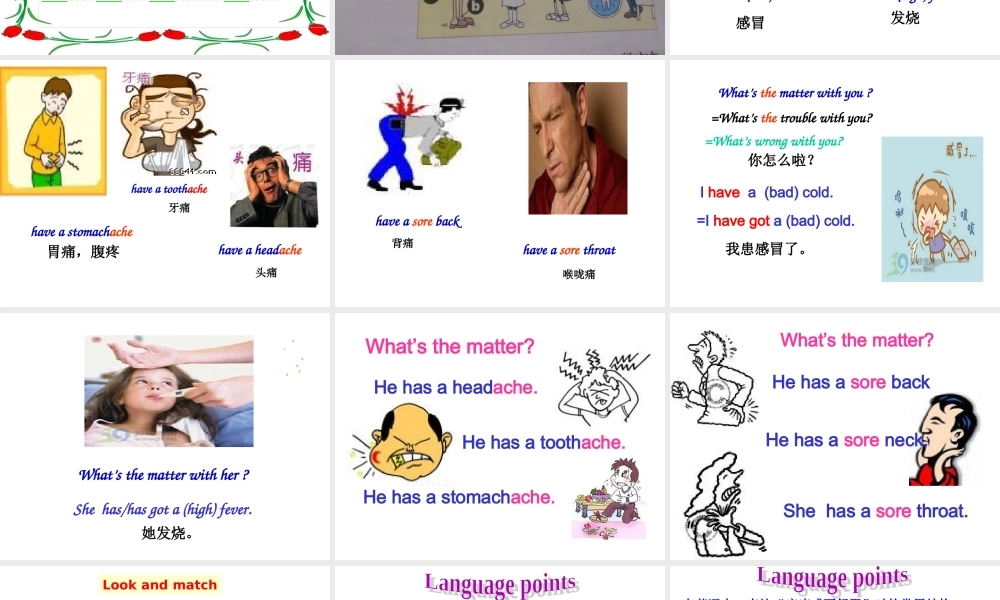Unit1What’s the matter? SectionALanguage goals: 1. Talk about your health. 2. Give advice( 建议 ).bodyfeettoothteethfacenosetoenecklegheelelbowfacestomach1a Look at the picture. Write the correct letter[a—m] for each part of the body.____arm ____back ____ear ____eye ____foot____hand____head leg ____mouth____neck ____nose ____stomach ____toothhegibajlcdmkfI had a cold.What’s the matter?I have a sore back.I have a stomachache.have a (bad) cold感冒What’s the matter? (你 )怎么了?have a (high) fever发烧 have a toothachehave a headache牙痛头痛have a stomachache胃痛,腹疼have a sore back have a sore throat背痛喉咙痛I have a (bad) cold.=I have got a (bad) cold.What’s the matter with you ? =What’s the trouble with you?=What’s wrong with you?你怎么啦?我患感冒了。She has/has got a (high) fever.What’s the matter with her ?她发烧。What’s the matter?He has a headache.He has a toothache.He has a stomachache.He has a sore backHe has a sore neck.She has a sore throat.What’s the matter?1. have a cold2. have a fever3. have a headache4. have a stomachache5. have a toothache6. have a sore throat7. have a sore backa. 喉咙痛b. 背痛c. 牙痛d. 头痛e. 胃痛f. 感冒g. 发烧Look and match1. 医生和护士询问病人病情时常用问句“怎么了 ?” ,英文如何表达? What’s with you? =What’s with you? =What’s ? =What’s with you? =What’s ? the matter the trouble wrong your trouble up 注: with 为介词,后跟人称代词宾格, 如 her,him,them 等。在英语中,表达“疼痛或不舒服”时的常用结构:(1) 主语 +have/has+a + 病症 have a cold/fever / cough(2) 主语 +have/has+a+sore+ 发病部位 sore 是一个独立的形容词,指的是身体某一部位的酸痛。如: sore back, sore throat,sore back,sore neck.(3) 主语 +have/has+a+ 部位 -ache -ache 作后缀,常与表示身体部位的名词合成一个新词,表身体某部位疼痛,如: toothac...




